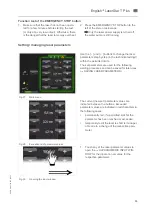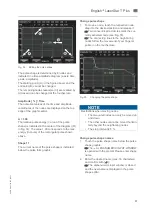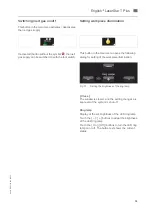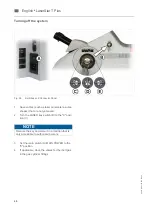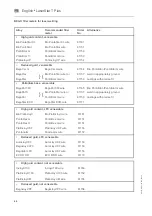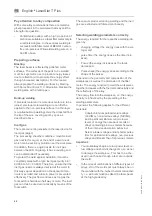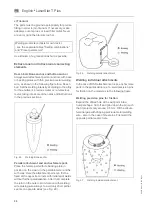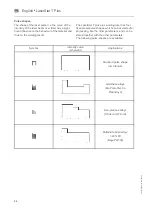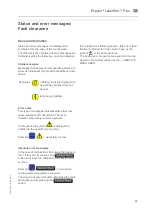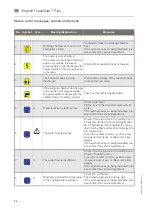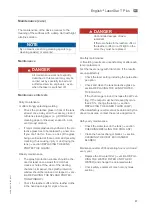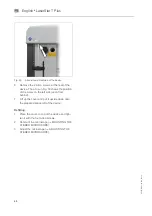
46
860
76
D
B
-en/
03
35
5.0
00
32
English
⋅
LaserStar T Plus
en
Pay attention to alloy composition
With some alloy combinations there are metallur-
gical processes in the weld area that may call the
strength into question:
•
Partial denture alloys with a high proportion of
carbon are suitable as a laser filler metal only to
a restricted degree. In these cases welding is
successful with filler metal of BEGO's carbon-
free non-precious Wiroweld welding wire on a
CoCrMo base.
Preparing surfaces
Blasting
The laser beam is reflected by polished metal
surfaces. The surfaces of the parts to be welded
must be kept matt so as to prevent energy losses
due to reflection (or to promote the energy effect
through increased absorption). For this reason
always prepare the welding surfaces by blasting
with Korox 50 or Korox 110. Alternative: blacken the
welding area with a felt-tip pen.
Build-up welding
If precious metal and non-precious metal are to be
joined, precious-metal welding wire can first be
applied to the non-precious surface in a thin layer
(so-called build-up welding). Here the drops fall from
the tip of the wire covering spot by spot, as
described above.
Inert gas
There are connecting sockets on the laser device for
inert gas (argon).
The processing chamber contains a movable inert
gas nozzle (for argon) at the end of a swan-neck
which can be set in any position near the workpiece.
In addition, there is a rigid nozzle for inert gas
between the LED ring lamp. It has a coupling and
can be dismantled if necessary.
To protect the weld against oxidation, it must be
constantly swept with argon inert gas (purity 4.6 =
99.996 to 5.0 = 99.999). Therefore, ensure that the
inert gas nozzle is always directed at the weld. In
this way vapour deposition on the optical compo-
nents is avoided and a loss in power is prevented
effectively. The gas flow continues as long as the
foot switch is held down half way or more. The inert
gas can thus be used economically by means of the
foot switch.
The vapours produced during welding and the inert
gas are extracted and filtered continuously.
Selecting welding parameters correctly
The energy required for the respective welding job,
given by
•
charging voltage (the energy rises with the vol-
tage) and
•
pulse time (the energy rises as the time incre-
ases),
•
Focus (the energy increases as the focus
decreases),
•
Pulse shape (the energy varies according to the
shape of the pulse)
depends on the geometry and composition of the
workpieces as well as the dimension of the filler
metal. The energy required to weld the workpieces
together increases with the thermal conductivity and
the reflectivity of the alloy.
The energy flow into the workpiece, i.e. the energy
density, is influenced by the presetting of the
welding parameters.
In general, the following applies for the different
materials:
Cobalt-chromium partial denture alloys
(CoCrMo), non-precious alloys (NiCrMo)
and in particular titanium require lower
levels of energy than precious metals or
alloys containing precious metals because
of their intensive absorption behaviour.
Select a lower voltage and/or shorter pulse
time for partial denture alloys, non-precious
alloys and titanium than for precious metals.
Important:
•
You must always begin at a low power level, i.e.
low voltage and short discharge time, so as not
to damage the workpiece. This has to be che-
cked in each case through a test at or outside
the weld.
•
In the case of combinations of different types of
alloys, 2/3 of the weld spot must always be on
the material with the higher thermal conductivi-
ty, i.e. with combinations direct the laser beam
at the high-grade alloy.


